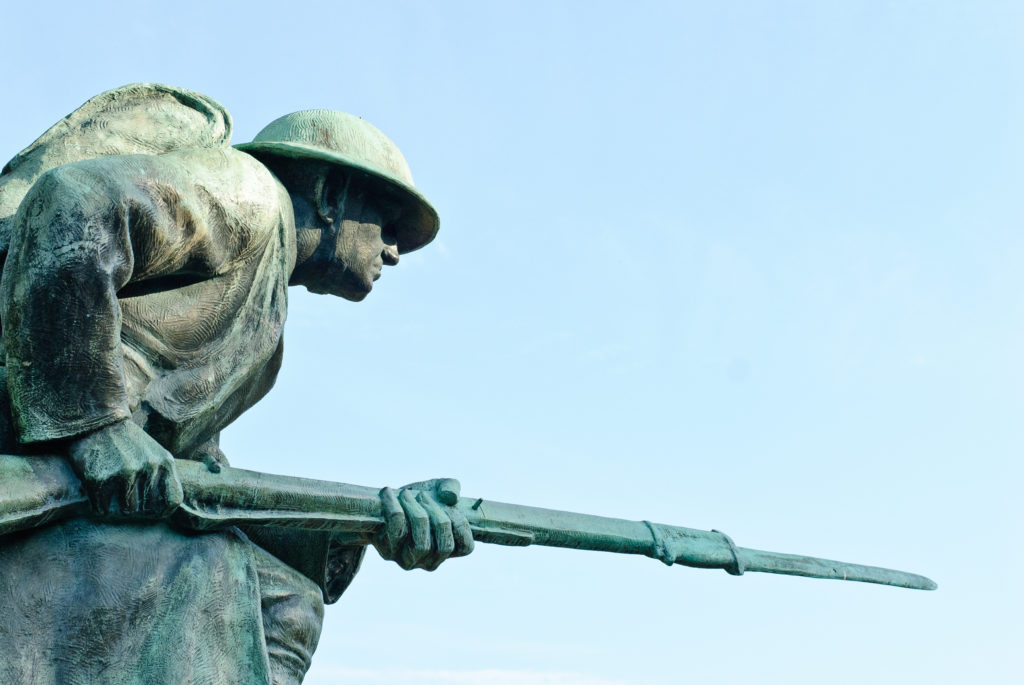Steel During Wartime: The Role of Steel Production During World War I

Over the years, human beings have found ways to mold and manipulate their environment to fit their needs. Those needs might be to build living structures, automobiles, bridges, or—as the world saw during the 20th century— to go to war. Because of the industrial revolution, the 20th century saw the production and advancement of a great many things: buildings like the empire state building were built, bridges, houses, but also weaponry and aircraft that would soon be used in conflicts that would change and alter the world forever. The production of steel changed many things about modern warfare.
What Is Steel and How Is It Used?
Steel is an alloy of iron and other elements. In order to get quality steel, there must be the proper mix of iron and other metals and elements in order to achieve the strongest possible end result. When adding certain elements to iron, specific characteristics and properties are achieved.
Steel In World War I — From Helmets to Medical Instruments
Prior to the first world war, helmets were primarily used decoratively. They served the purpose of forming part of the uniform, identifying the uniform you were wearing, etc. The British Army, for example, wore largely ornate headgear during the war of 1812. It was a kind of high top hat made mostly of fabric and/or leather. During the early stages of World War I, armies were not yet fully aware of the firepower that was to be unleashed. Once armies understood the kind of war this was—really the first with this level of destructive weaponry and shrapnel, the ornate helmets became a bit of a joke. Not only did they give away positions but they served no purpose. Many a soldier lost his life in World War I because the helmet he wore did nothing to protect him.
So it was soon thereafter that armies began experimenting with the use of steel in their helmets in order to provide some ballistic protection.The Germans started by adding a steel piece to their cloth helmets. It seemed to have worked. For the British Army, this was the famous Brodie helmet. It was in 1915, that John L. Brodie began experimenting with helmets made out of mild steel. By 1916, the Brodie helmet improved and shifted to stronger, non-magnetic manganese steel. Over 7.5 Brodie helmets were made and produced and continued being used up until World War II.
During the war, the military was also frantically in search of harder alloys to be used in the war effort, particularly something that would be less susceptible to distortion from the heat and friction of firing. An English metallurgist Harry Brearley discovered that adding chromium to molten iron produced steel that would not rust. This was a major discovery given the conditions in a lot of the battlefields of World War I, particularly in makeshift hospitals and Army medical tents. Steel suddenly began being used to produce a lot of the necessary medical instruments that were needed for wartime operations. And that’s not all, during this arms race, the production of steel also saw the advent of cutlery. That’s right. Every time you pick up a fork and knife, you’re touching the legacy of World War I and the inventions that came out of it.
Steel Hits the Air— Aircraft Enters the War
As it was discovered that steel was highly resistant to high temperatures, new uses were found for it almost immediately. While this new steel did not make it into guns in World War I, it did make it into the engines of aircraft—which would become the new powerhouse of warfare in the conflicts to come. Britain started building planes in 1916. It had been only about 13 years prior that the Wright Brothers in America had managed to keep their first plane in the air for a grand total of 12 seconds. Amazing that the urgency of the war and the ingenuity of the West would achieve such strides in such short amount of time.
By the end of the war, planes were recognized as essential military weaponry. They were used to scout out terrain and find the enemy. This would help the movement of troops. Flights between Lond and Paris were done regularly, as planes were used to carry mail and other necessary equipment. In 1919, British aviators John Alcock and Arthur Brown flew across the Atlantic for the first time as they flew a modified World War I bomber. It was not long into the wear that these planes would become faster and more agile. Towards the end of the conflict, we would see the famous ‘dogfights.’ These were one on one fights between aircraft taking place in the skies. Something that would happen in a much bigger scale in World War II.
The early pilots that would learn to shoot down planes in the skies were known as ‘aces.’ These were guys that could rank up to 5 shot down planes at a time. Some pilots reached ace status. Other pilots helped develop and design what would be the next generation of war aircraft and capable firepower from the air.
The Beauty of Steel and How it Inspires Imagination
Here at Steel Specialties, we have worked with steel in a variety of capacities. Whether you are talking about steel columns or steel for construction. We know the beauty and longevity of this metal alloy and it’s why we work hard to guarantee quality steel every time. Give us a call today

